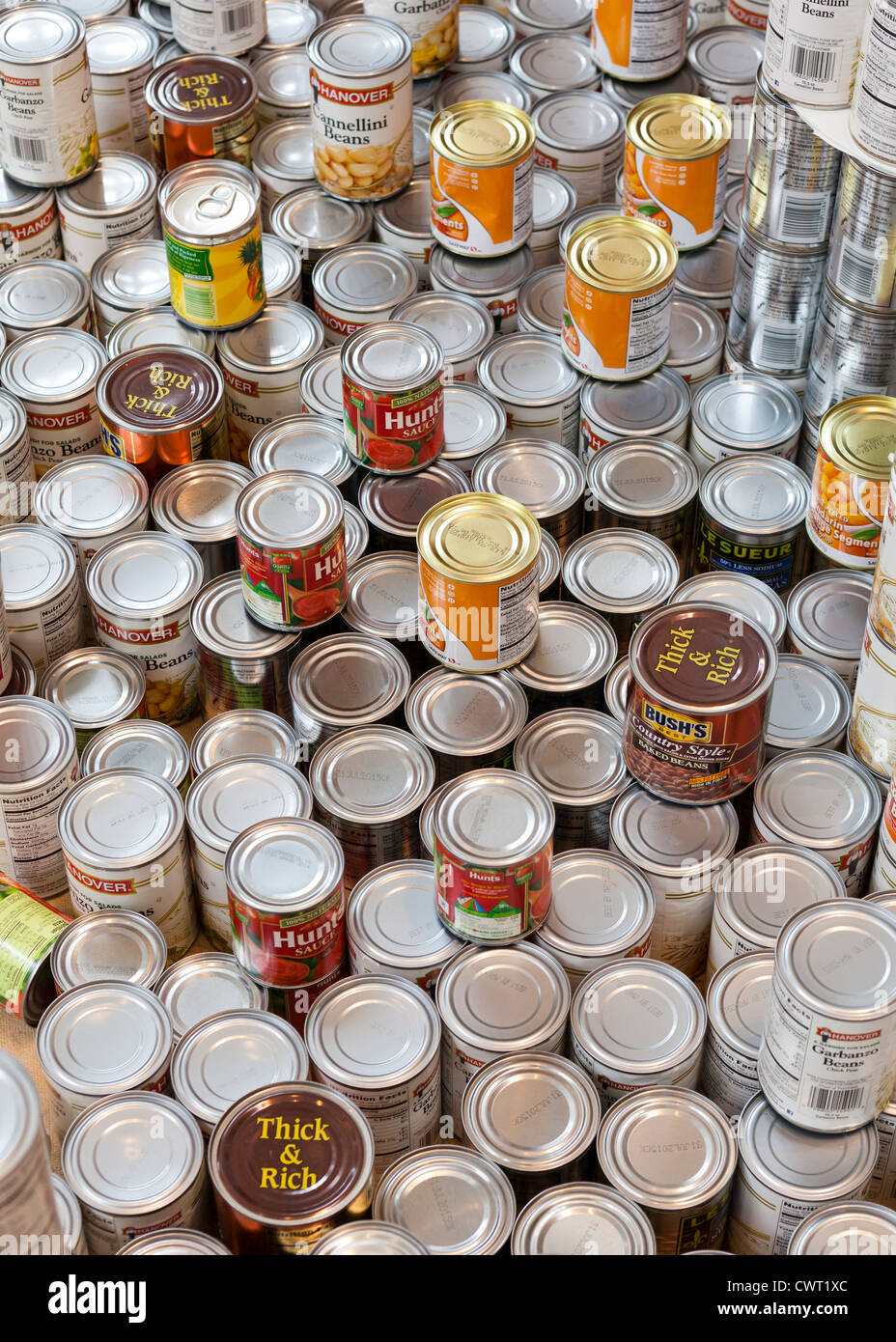
Ever wonder how canned food became such a pantry icon? Well, you can actually thank Napoleon Bonaparte! He once offered a prize for a food preservation method to keep his troops well-fed on the move, and voilà, canning was born. This innovation totally changed the game, giving us convenient staples like canned tomatoes that are genuinely useful.
But let’s be real, somewhere along the way, we might have taken things a little too far. Not everything belongs in a can, and some options are so packed with processing, sky-high sodium, or just plain unappetizing qualities that they’ve earned a permanent spot on the ‘avoid’ list for many modern diets, especially among younger, more health-conscious shoppers.
So, if you’re curious about which canned culprits are getting the boot from grocery carts, you’ve come to the right place. We’re about to unmask some of these old-school canned staples and explore the compelling reasons why they’re no longer making the cut in today’s kitchens. Get ready to rethink your pantry strategy!
1. **Canned Fruit (Especially in Syrup)**Many of us have been totally tempted by a colorful can of fruit cocktail, especially when craving out-of-season fruit. It seems like a quick win for your daily fruit intake, right? But hold up, because this is one temptation you should probably resist, especially if you’re trying to watch your sugar intake.
The biggest problem? Canned fruit cocktails are often swimming in heavy syrup. This isn’t just a little extra sweetness; it’s a massive dose of unnecessary sugar and calories, turning what should be a healthy snack into more of a dessert. And trust us, that extra sugar is doing your body no favors.
Beyond the sugar overload, the canning process itself can be a real buzzkill for fruit. It often leaves the fruit mushy and unappealing, a far cry from the crisp, vibrant texture of fresh produce. Even if you spot cans labeled “No Added Sugars,” be cautious, as these are frequently packed with artificial sweeteners, which can be detrimental to your gut and metabolic health.
So, while a canned pear might seem harmless, a single portion of Del Monte Pear Halves in heavy syrup can hit you with a whopping 21 grams of sugar! When you consider that the recommended upper limit for added sugars each day is 37.5 grams for men and 25 grams for women, according to Healthline, that’s an enormous amount from something that’s supposed to be good for you. Plus, the canning process can zap fruits of their vital nutrients, making them a nutritional letdown. For a truly healthy and delicious fruit fix, fresh or frozen is almost always the superior choice.
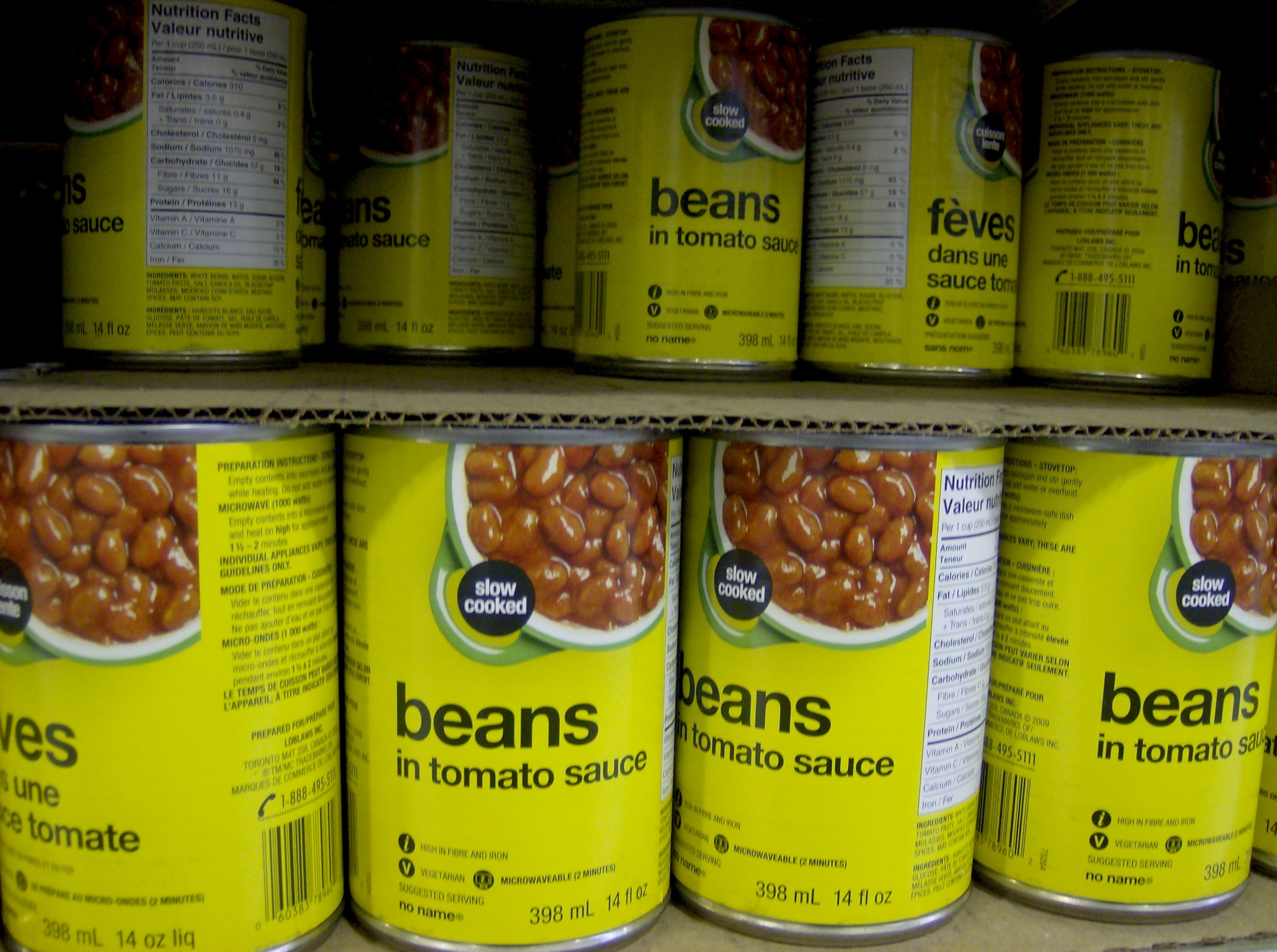
2. **Canned Refried Beans**Oh, canned refried beans. What happens when you take perfectly good, wholesome beans and strip them of all their dignity? You often end up with these mushy, pasty blobs that, while convenient, come with some serious nutritional baggage. It’s a classic case of convenience sacrificing quality.
The sodium content in canned refried beans is often shockingly high. We’re talking enough sodium to preserve a mummy, as the context so aptly puts it! This isn’t just about taste; excessive sodium intake is linked to elevated blood pressure and can contribute to heart disease, making it a major concern for your long-term health.
But wait, there’s more. Many canned refried beans also pack in added fats, frequently in the form of lard or hydrogenated oils. These aren’t the good fats; they can significantly increase your intake of unhealthy trans fats, which are definitely not on the menu for a modern, health-conscious diet. It’s a double whammy of health no-nos.
And let’s be honest, no matter how much you love a particular brand, canned refried beans just can’t compete with the homemade version. As chef Ron Silver, owner of New York-based restaurant Bubby’s, explains, “I tend to stay away from supplemental recipe canned goods… I can make it better myself.” He’s totally right! Making them from scratch allows you to control the ingredients, ditch the excess sodium, and truly savor the flavor. An average can can contain almost 900 milligrams of sodium per cup, which is a significant chunk of your daily allowance.
Read more about: Beyond the Stars and Stripes: Unmasking the Surprising International Roots of 15 ‘All-American’ Foods
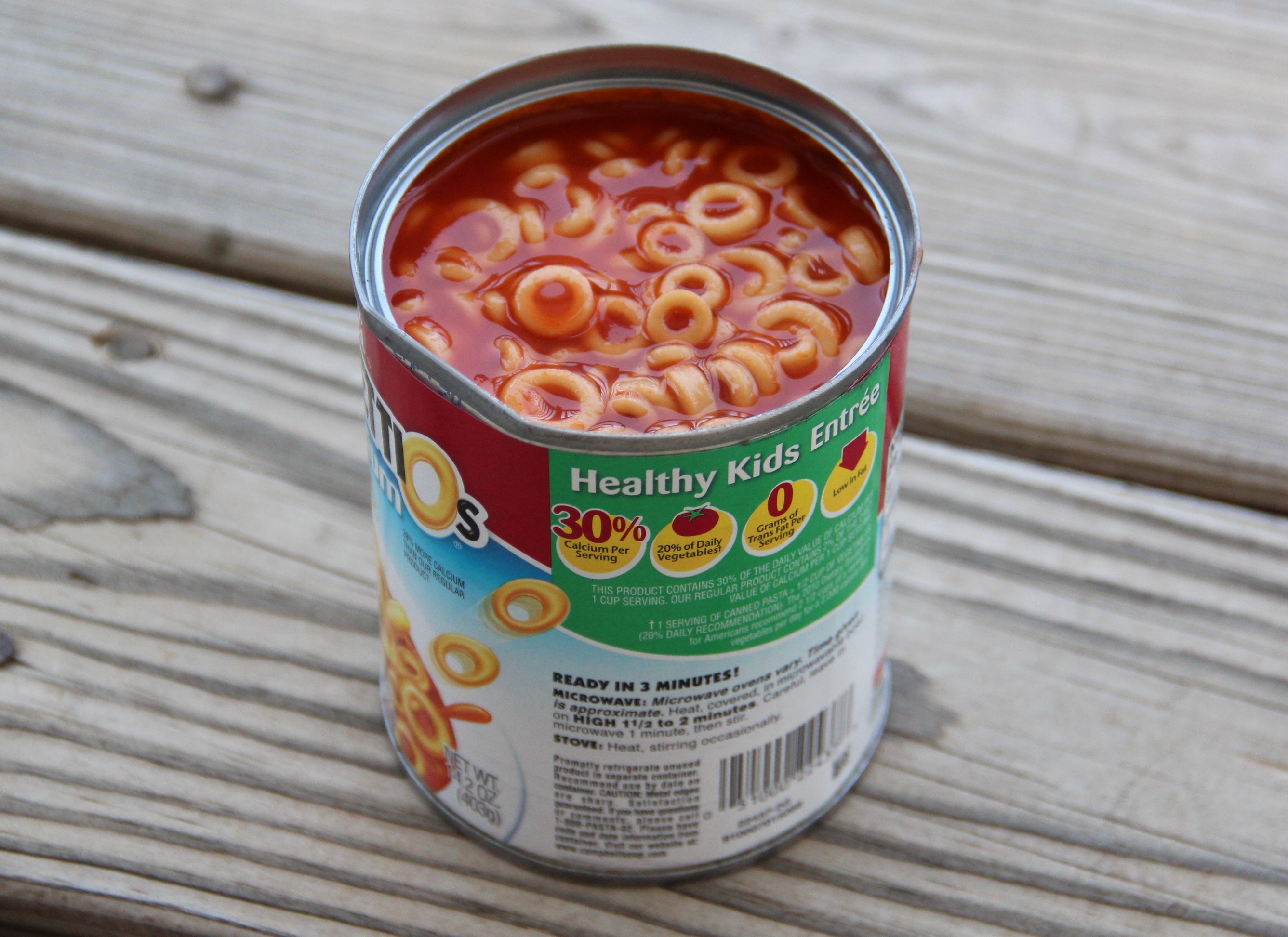
3. **Canned Pasta & Noodles**Every American kid who grew up in the ’80s and ’90s has some big feelings about SpaghettiOs. Those little circles of pasta swimming in a suspiciously bright orange sauce were a childhood staple for many. But nostalgia aside, any kind of canned pasta, whether it’s SpaghettiOs or other noodle dishes, is generally a less-than-ideal option for kids and adults alike.
The biggest offenders here are the usual suspects: sodium, preservatives, and unhealthy fats. Canned pasta is often loaded with all three, turning what seems like a harmless meal into a nutritional minefield. The Takeout, a respected food publication, points out that these factors make canned pasta something to steer clear of if you’re prioritizing your health.
And seriously, cooking pasta from scratch is about as easy as boiling water. So, the convenience factor of canned pasta often doesn’t outweigh the nutritional drawbacks. You’re getting a much better, healthier, and more satisfying meal by taking a few extra minutes to cook dried pasta yourself.
Canned noodles also tend to be way more cooked than freshly prepared pasta, often resulting in a mushy, gummy texture that leaves you wanting more. This overcooking can also mean its Glycemic Index (GI) ends up being higher, so you digest it quicker, leading to less sustained energy. When you cook pasta al dente yourself, you maintain better control over its texture and nutritional impact. Plus, buying dried pasta isn’t usually much more expensive than canned versions, so your wallet won’t even feel the difference!
Read more about: Seriously, Where Did They Go? 12 Iconic American Foods That Vanished From Our Tables

4. **Canned Tuna (Especially White Tuna)**America absolutely loves its tuna, with roughly 1 billion pounds consumed annually, making it the nation’s second most popular seafood product after shrimp. Its convenience and ability to retain flavor and freshness are truly undeniable, making it a go-to for quick lunches and dinners. However, there’s a pretty significant reason to seriously reduce your intake of certain types of canned tuna: the amount of mercury you could potentially be ingesting.
White tuna, which is most commonly sourced from albacore, is particularly problematic when it comes to mercury content. This specific type of canned tuna can have almost triple the amount of mercury compared to other varieties. And consuming too much mercury? That can cause some serious health problems that you definitely want to avoid.
Excessive mercury levels can negatively affect multiple parts of your body, including your kidneys, heart, and central nervous system. In particularly severe cases, mercury poisoning has been linked to blindness, seizures, and even death, according to the Cleveland Clinic. While these extreme symptoms usually occur from long-term, excessive exposure, it’s always a smart move to limit your intake wherever possible, and cutting down on white tuna is a good place to start.
Health-conscious younger shoppers are increasingly aware of these risks. The quality and sustainability of tuna brands have also been a point of contention, with some, like Bumble Bee and StarKist, facing scandals. To play it safe, try to limit your white tuna portions to a maximum of three per month, and opt for light tuna varieties instead wherever possible. This small swap can make a big difference in your overall mercury exposure.

5. **Canned Sausages (Like Vienna Sausages)**Canned Vienna sausages might seem like the ultimate convenient snack or a quick meal solution for when you’re really in a pinch. But don’t let their small size fool you; these tiny sausages pack a mighty punch of things you probably don’t want in your diet. They’re a prime example of an ultra-processed meat product that modern diets are increasingly sidestepping.
First up, they are absolutely loaded with sodium, nitrates, and other preservatives, all designed to ensure they last practically forever on the shelf. If a food can outlive your houseplants, it’s probably not the freshest option for your body, right? These additives are used to enhance flavor and extend shelf life, but they come at a cost to your health.
Nutritionally, canned sausages are far from a lean option. They often contain nearly twice as much fat as protein, which isn’t ideal if you’re looking for a genuinely protein-packed snack. If you’re trying to build muscle or just stay full, there are infinitely better alternatives out there that don’t involve a can opener and a side of regret.
What’s more, processed meats, including canned sausages, have been found to be particularly detrimental to health. One study published in Critical Reviews in Food Science and Nutrition found that eating even 50 grams of processed meat daily can raise your chances of developing coronary heart disease by almost 20%. Excessive consumption of processed meat may also increase your risk of developing specific cancers, as noted by the Harvard T. H. Chan School of Public Health. These sausages are typically made from a mix of lower-quality meats, and their taste and texture often can’t compare to fresh, ethically sourced options. It’s a clear miss for discerning palates and health goals.
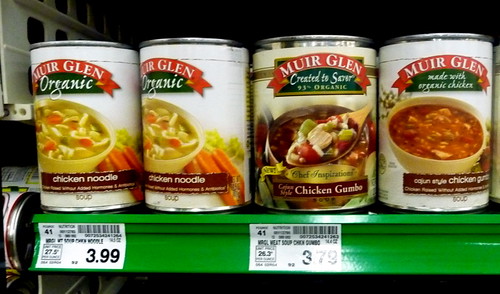
6. **Canned Soup**Remember that era when we all thought canned soup was a super nutritious meal? Ah, those were the days. But let’s be honest, that was kind of cute. Many canned soups, even from popular brands like Campbell’s, are essentially sodium bombs disguised as comfort food staples. They’re often just salt water with a few sad, overcooked veggies floating around for decoration.
While canned soup can indeed be a quick and easy meal option, it typically comes with a hefty dose of sodium and preservatives. This can lead to increased blood pressure and other health issues if consumed regularly in high quantities. Plus, many varieties surprisingly contain added sugars and trans fats, all included to enhance flavor and extend shelf life, but definitely not to enhance your health.
Making soup from scratch is not only significantly healthier but also way more flavorful and satisfying. You control the ingredients, the salt, and the freshness. A half-cup serving of Campbell’s Condensed Tomato Soup, for instance, contains 480 milligrams of sodium, which is over a fifth of the daily recommended limit in what is, let’s be honest, a pretty small amount of soup. This shows just how quickly sodium can add up.
Beyond the sodium, canned soups often don’t offer much nutritional value and tend to be less filling than their fresh or homemade counterparts. This means you might find yourself reaching for snacks much sooner than expected. For the price of a few cans, you could easily whip up a larger, more nutritious batch of soup from scratch, packed with fiber and fresh vegetables. It’s a win-win for your taste buds, your health, and your wallet.
Read more about: Transform Your Plate, Transform Your Life: 15 Essential Dietary Shifts for a Healthier You This Month
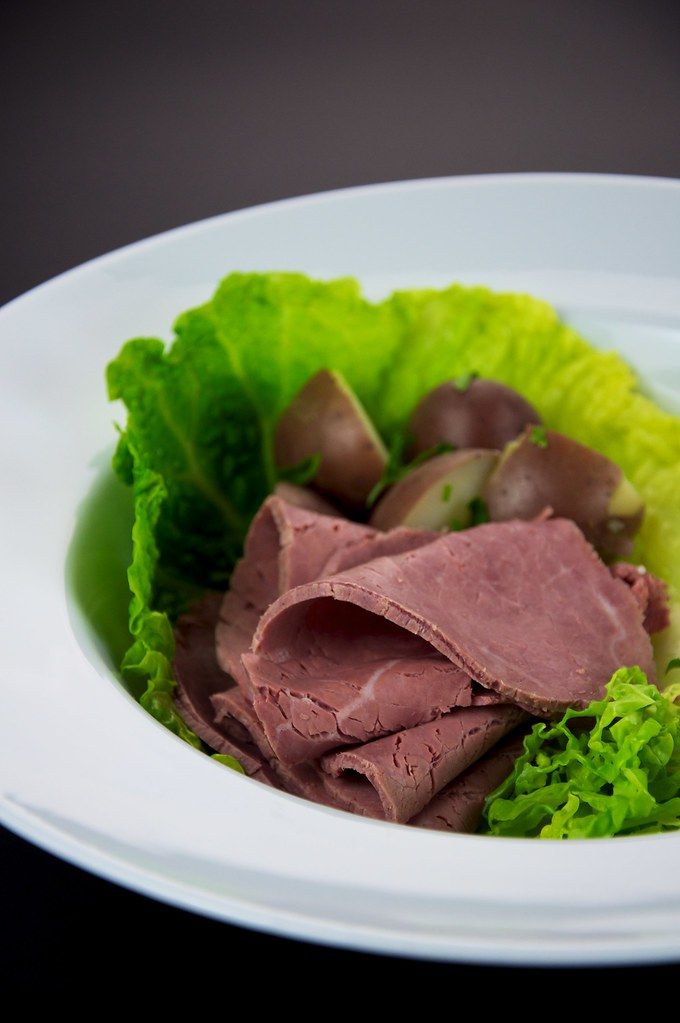
7. **Corned Beef**Canned corned beef might bring back a wave of nostalgic memories for some, perhaps conjuring images of quick, no-fuss meals from yesteryear. However, for anyone mindful of their health and the quality of their food, it’s far from a health-conscious choice for today’s modern diet. There’s a stark difference between the fresh brisket corned beef you might find at a deli and its canned cousin.
Unlike the deli version, canned corned beef often utilizes lower-quality cuts of meat. The term “corned” itself, surprisingly, doesn’t refer to sweet corn at all. Instead, it points to the large grains of rock salt used in the preservation process. These cuts are heavily brined in salt and spices, which profoundly affects not just the taste but, more critically, significantly increases the sodium content.
This sky-high sodium content is a major red flag, as it’s directly linked to elevated blood pressure and a heightened risk of heart disease. Furthermore, canned corned beef falls into the category of processed meats, and consuming processed meat comes with an increased risk of cancer, as indicated by various health studies. It’s a tough pill to swallow for a product that seems so innocent.
Given these health considerations, younger shoppers, who are often more attuned to the implications of processed foods and high sodium, are likely to steer clear. While the convenience is undeniable, the trade-off in terms of nutritional value and potential health risks just doesn’t make it worth a spot in a modern, healthy pantry. Better to opt for fresh, unprocessed meats when you can.
Continuing our deep dive into the canned foods getting the cold shoulder, this section uncovers the remaining seven items, focusing on issues like questionable quality, bland textures, mercury content, and the overall lack of authenticity compared to fresh or homemade alternatives. Younger shoppers, armed with more information and a desire for healthier, more transparent food options, are increasingly leaving these items on the shelves.
Read more about: Seriously, Where Did They Go? 12 Iconic American Foods That Vanished From Our Tables
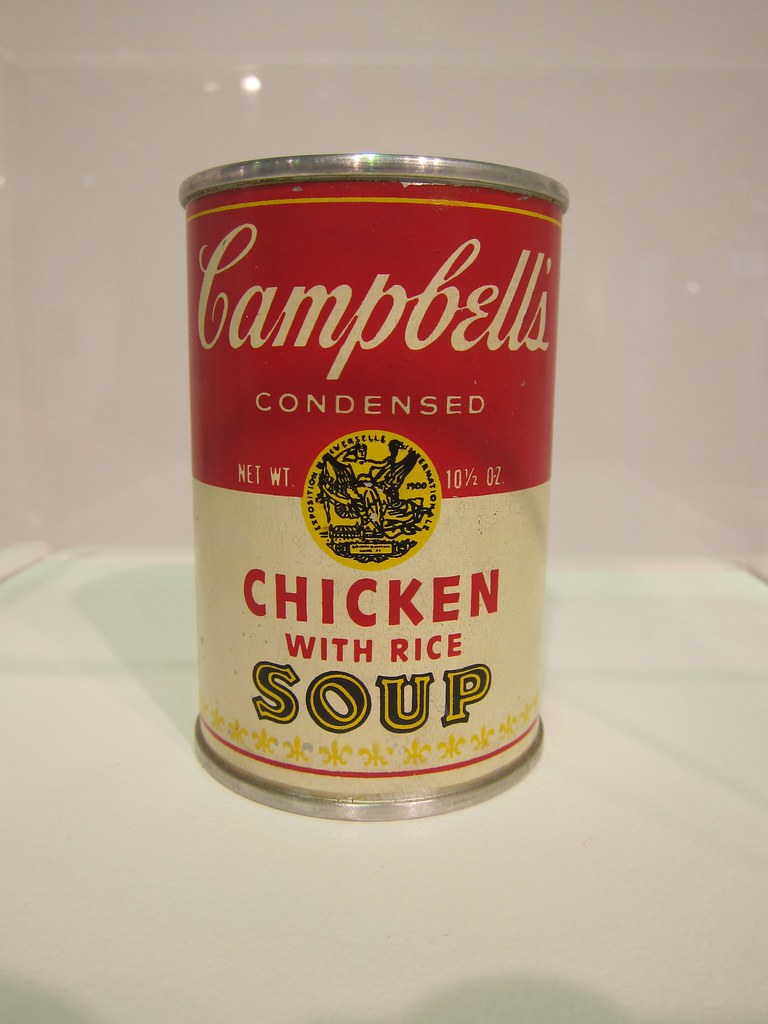
8. **Canned Chicken**Canned chicken might seem like the ultimate shortcut to an easy meal, a quick protein fix when you’re in a hurry. But let’s be real, the reality is often far less appealing than the promise of convenience. Many younger shoppers are steering clear of this pantry staple, and for good reason.
One of the biggest turn-offs is the texture. It’s frequently described as rubbery or strangely mushy, a far cry from the tender, juicy chicken you’d cook yourself. Add to that a flavor profile that can range from bland to oddly metallic, and it’s clear why it struggles to compete with fresh options. The canning process, with its high heat and pressure, often strips away much of the fresh chicken’s natural goodness and appealing characteristics.
Many canned chicken products are loaded with added preservatives and modified food starches. While these enhance shelf stability, they often contribute to an unnatural taste, mushy texture, and strip much of the fresh chicken’s nutritional value.
Ethical considerations also weigh in. As certified nutritionist Serena Poon notes, “Much industrial chicken is raised in terrible conditions, and many have infections and are treated with antibiotics,” sparking concerns about antibiotic resistance and child development. For a healthier, more ethically sourced protein, rotisserie chicken or pre-cooked, refrigerated options are superior, retaining better flavor and integrity.
Read more about: Listen Up: 14 Critical Signs Your Body Is Quietly Signaling Nutrient Deficiencies

9. **Canned Clams**Ah, canned clams! They might appear to be a handy ingredient, perfect for whipping up a quick chowder or adding a seafood twist to your pasta dishes. But before you stock up, it’s worth noting that these briny bivalves come with a few rather unappetizing drawbacks that make them a less-than-ideal choice for modern kitchens.
The high-heat canning process is a real culprit here, often transforming what should be tender seafood into something rubbery and unpleasantly chewy. If you’re a fan of the delicate texture of fresh clams, you’ll find canned versions simply don’t measure up. This textural compromise alone is enough to deter many who prioritize a satisfying eating experience.
Then there’s the flavor. Canned clams can carry an overpowering briny or distinctly metallic aftertaste. This strong, often artificial, flavor can easily dominate and throw off the delicate balance of your entire meal, making your culinary efforts feel a little…off. It’s tough to mask that metallic tang once it’s in your dish.
Canned clams are often high in sodium, a major red flag for health-conscious shoppers. Plus, you might find gritty bits of shell or sand, an unwelcome textural surprise. For fresh seafood flavor and superior texture, frozen or fresh clams are almost always the smarter, more enjoyable choice.
Read more about: Get Ready To Slurp! We Found the 12 Most EPIC Soup Spots Across America That Soup Enthusiasts Absolutely RAVE About!

10. **Pitted Olives**Olives are absolutely a firm favorite in the world of preserved products, and in many ways, they truly shine as an ideal canned food. Their natural flavors beautifully complement the salty brine they’re packed in, often making them even more delicious. However, the type of canned olive you pick can make a world of difference to your eating experience, and if you’re a fan of pitted olives, you might want to reconsider.
The core issue with pitted olives is that once the stone is removed, they become far more susceptible to brine penetration. This means they tend to soften much faster than their unpitted counterparts, leading to a rather mushy texture instead of that firm, fleshy bite that makes olives so appealing. This problem is particularly pronounced with sliced olives, which expose an even greater surface area to the softening effects of the brine.
This increased brine action also makes pitted olives excessively salty. While some saltiness is desired, the intense brining often overwhelms their natural, mellow, complex flavors, resulting in a one-note taste that misses the point of a good olive.
While pitting fresh olives might require a little more effort on your part, the trade-off in terms of taste and texture is absolutely worth it. You gain control over the salt content and preserve the olive’s natural firmness and nuanced flavor. For those discerning palates, opting for unpitted olives or even fresh ones, despite the extra step, delivers a superior gastronomic experience that canned, pitted options simply can’t match.
Read more about: Fuel Your Day for Less: 9 Genius Healthy Lunch Ideas Under $5 That’ll Blow Your Mind (Not Your Budget!)

11. **Green Vegetables (Canned)**First things first: If you’re reaching for cans of green vegetables and popping them into your grocery basket, we totally salute your effort to eat your greens! Your mom always said to, and here you are, putting that advice into practice. But, and it’s a big but, those cans of pre-cooked broccoli, asparagus, and green beans might not actually be the best way to get your daily veggie fix.
While canned vegetables generally offer some beneficial nutrients, the intensive preparation method they undergo can significantly zap them of the good stuff. Canned green vegetables are blanched before being sealed, and this heating process can reduce the concentration of certain vital vitamins, leaving you with a nutritionally diminished product compared to raw or even frozen alternatives. It’s like getting a watered-down version of what you actually need.
Aesthetic appeal is also compromised. Canned green vegetables often lose their vibrant hue, appearing dull and unappetizing compared to fresh produce. This visual dullness makes them less appealing, especially for younger consumers who value freshness.
And while some green vegetables are packed simply in water, others can have sodium added to boost their flavor, which, again, makes them less nutritious than you might prefer. The solution here is pretty simple: check the label for low-sodium or no-sodium options. Better yet, opt for frozen vegetables, which typically don’t have any added sodium and retain much more of their freshness and nutrient content than their canned counterparts.
Read more about: Unearthing Ancient Powerhouses: The Top 10 Superfoods Revolutionizing Your Plate in 2024

12. **Spam**There are plenty of canned meats out there, but for many, Spam holds a uniquely legendary status. This slightly mysterious-looking pink meat has found its way into countless meals, from fried rice to sandwiches, celebrated for its bold flavor and incredibly easy-to-cook nature. It’s definitely a product that customers keep coming back to, but that doesn’t necessarily mean it’s the healthiest choice on the menu.
One of the biggest red flags with Spam is its absolutely sky-high sodium content. A mere two ounces of this stuff can contain almost a third of your daily recommended sodium allowance! Consuming too much sodium regularly is a well-known contributor to higher blood pressure, according to Healthline, which is definitely something modern diets aim to avoid.
Beyond the salt, Spam is also quite high in fat, often containing more fat than protein per serving. If you’re looking for a protein boost to fuel your active lifestyle or support muscle growth, this imbalance isn’t exactly ideal. There are much leaner and more nutrient-dense protein sources available that don’t come with such a heavy fat load.
Despite its fan base, Spam is undeniably ultra-processed. While moderation is key for any processed food, its highly processed nature deters those seeking whole, minimally processed ingredients. For a more authentic, animal-based product that truly resembles meat, the fresh aisle with sustainably and ethically sourced options is a much better bet.
Read more about: Future-Proofing Your Career by 2030: 12 Essential Strategies for Professionals in an AI-Driven World

13. **Brine-packed Vegetables**If you’re filling your plate with vegetables, it’s totally reasonable to expect that they’re a healthy choice. But that isn’t always the case, especially if they’ve just come out of a can and are packed in brine. While many canned vegetable varieties contain little more than just veggies and water, others are loaded with additions designed to boost their flavor, and brine is a prime example of where convenience can come at a cost.
By its very nature, brine is a solution absolutely chock-full of sodium, being essentially water and salt. And guess what? This sodium then infiltrates the vegetables, dramatically raising their overall sodium content. This means that even seemingly innocuous-looking vegetables can end up containing surprisingly high levels of sodium, turning a healthy side dish into a significant source of unwanted salt.
For instance, a half-cup of Walmart’s Great Value Mixed Vegetable Medley packs almost 300 milligrams of sodium—about 13% of an adult’s daily recommended amount. This might seem small, but it adds up quickly from a supposed ‘healthy’ meal component.
But don’t despair, the solution is thankfully quite simple: become a label sleuth! These days, it’s much easier to find low-sodium or no-sodium canned vegetable options in most major supermarkets. Alternatively, a fantastic swap is to opt for frozen vegetables instead of canned. They usually don’t have any sodium added, and they retain much more of their natural freshness and nutritional integrity, offering a genuinely healthier and often more flavorful alternative.

14. **Canned Chili**Chili is pretty much the ultimate comfort food. There’s something so incredibly satisfying about a warm, hearty bowl, especially on a chilly day. And let’s be honest, the only thing that’s not comforting about it is the hours it can take to make a truly good one from scratch. So, to cut down on stress and maximize pleasure, grabbing a can of chili, pouring it into a bowl, and zapping it in the microwave seems like a brilliant idea, right?
However, canned chili can deliver more unhealthy fats, especially saturated and trans fats, than desired. Some brands provide nearly a quarter of your daily saturated fat allowance in just a half-cup serving! This can negatively impact cholesterol, increasing ‘bad’ cholesterol and raising heart disease risks, as noted by the NHS. Trans fats have similar effects.
Beyond the fat content, canned chili is often a sodium powerhouse, loaded with salt to enhance flavor and extend shelf life. And to add insult to injury, many brands also contain high fructose corn syrup, a sweetener linked to various health issues, especially when consumed regularly. Instead of real meat, you might find textured vegetable protein, a highly processed soy product, filling out the can.
Let’s be honest: the taste of canned chili simply can’t compare to a homemade version. With homemade chili, you get to control every single ingredient, from the type of meat (or beans!) to the spices and the amount of sodium and fat. While looking for low-saturated-fat canned chili can be a good compromise, we promise you, making it yourself is not only healthier but will be infinitely more comforting and delicious. It’s a flavor journey that’s definitely worth the extra effort!
Read more about: Transform Your Plate, Transform Your Life: 15 Essential Dietary Shifts for a Healthier You This Month
And there you have it, folks! Our deep dive into the 14 canned foods that younger, more health-conscious shoppers are increasingly avoiding. It’s clear that while the convenience of canned goods can be tempting, a closer look at the nutritional labels and ingredients often reveals a less-than-ideal picture. From hidden sugars and excessive sodium to questionable processing and bland textures, many of these pantry icons simply don’t align with modern dietary preferences and health goals. But this isn’t just about what to avoid; it’s about empowering you to make smarter choices. With so many fresh, frozen, and minimally processed alternatives available, rethinking your pantry staples can lead to a healthier, more flavorful, and ultimately more satisfying culinary journey. So, next time you’re navigating the grocery aisles, remember to read those labels, prioritize whole foods, and trust your taste buds—they’ll thank you for it!



